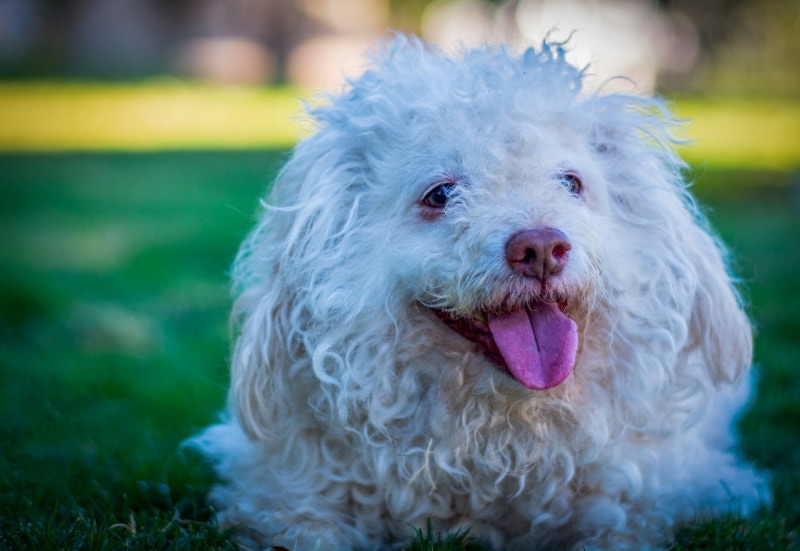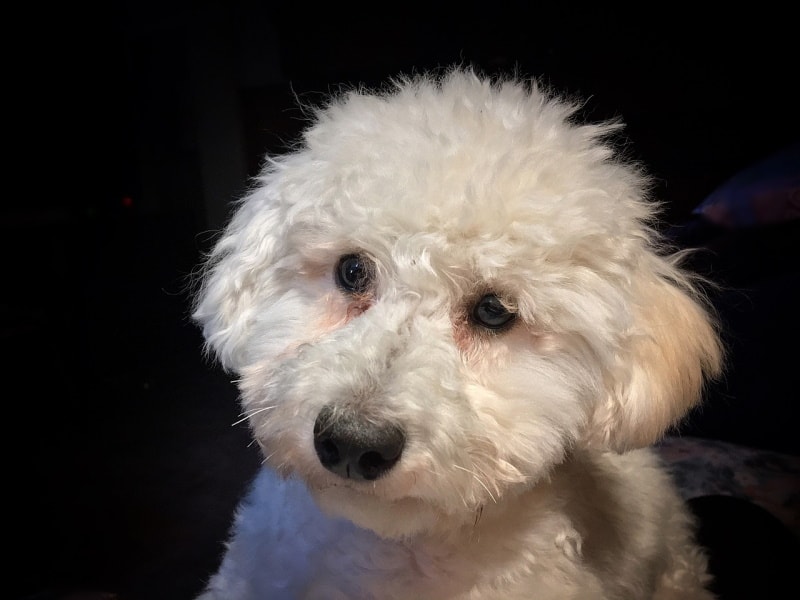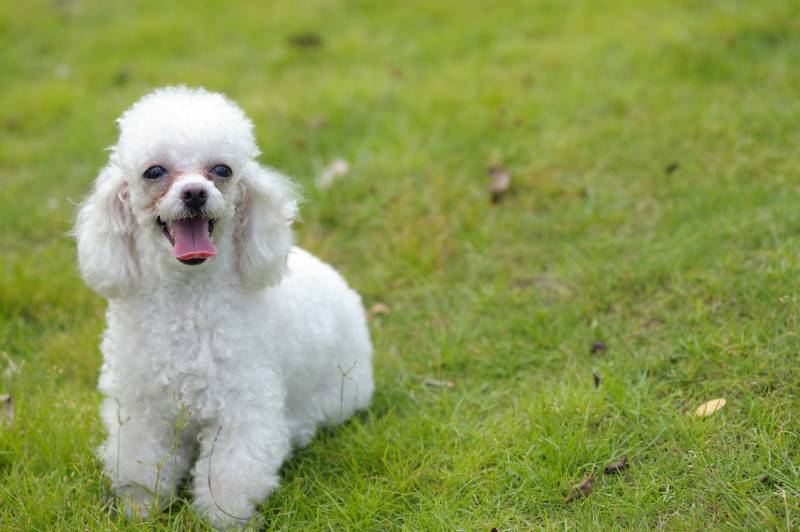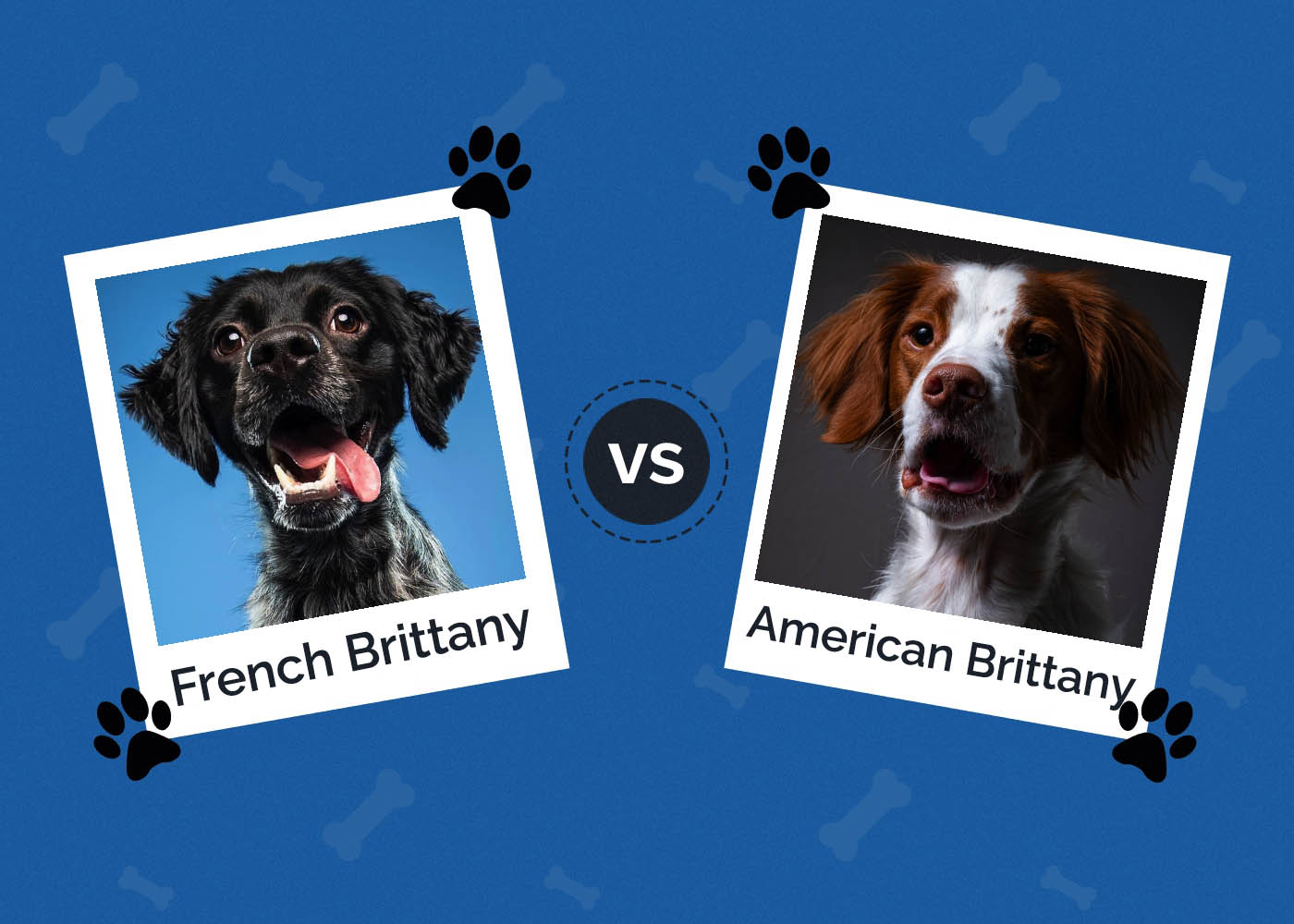White Toy Poodle: Facts, Origin & History (with Pictures)

Updated on

Click to Skip Ahead
Poodles’ intelligence, charm, and beauty have won hearts the world over. They’re consistently among the most popular breeds in the United States and in many other countries. Poodles have soft, low-shedding coats that many owners love. And few dog breeds have earned the cultural cache of the Poodle—especially the white Toy Poodle.
Whether it’s a felt shape on a 1950s circle skirt or a fluffy companion in a chic Parisian’s handbag, the white Toy Poodle is a true icon.
The Earliest Records of White Toy Poodles in History
Poodles may be a symbol of France today, but they actually have their origins in Germany. These dogs were bred for their hunting and swimming abilities, letting them work with hunters to retrieve downed waterfowl. The name poodle references those swimming abilities—it means “splashing” and comes from the same root as “puddle.”
These dogs quickly spread into France and other European countries. At the time, they came in one size (standard) and three main coat colors—brown, black, and white.
So white Poodles were common from the very beginning, but it took a while to get to toy Poodles. Interest in non-working “companion” dogs grew throughout the 1800s, including very small dogs kept as ladies’ pets. It isn’t surprising that Poodles were a natural choice for breeding smaller—just look at those soft coats—and white Poodles were the most popular choice. By the mid to late 1800s, Poodles came in a wide range of sizes that we’d recognize today as Standard, Mini, and Toy Poodles.

How the White Toy Poodle Gained Popularity
Even though white Toy Poodles existed by the end of the 1800s, they were just one dog breed among many. Their true explosion in popularity came in the mid-1900s. Poodles began gaining recognition as superior show dogs starting in the 1920s, and they grew in popularity over the years. But it wasn’t until the 1950s that Poodles truly had their moment. In fact, the AKC records only about 2,000 registered Poodles of all sizes in 1949.
A decade later, this number has jumped to a whopping 58,000, putting Poodles at the top of the charts for nearly three decades. Throughout the 50s and 60s, Poodles are associated with glamor—fashionable poodle skirts, Hollywood stars, and trips to Paris.
Formal Recognition of White Toy Poodles
With such a long history, it’s not surprising that Poodles were among the first dogs to get recognized by dog breed associations. The American Kennel Club first recognized Poodles in 1886, only two years after its founding. In the United Kingdom, Poodle-showing went back even further—the Kennel Club of the UK recognized them in 1874.
But originally, Poodles of all sizes were shown together. That changed in 1912, when the AKC listed Toy Poodles as a separate breed. Even then, it took another 15 years for a Toy Poodle standard to be reached. Ever since then, Toy Poodles have been regular contenders for Best in Show, taking the dog world by a storm.

Top 3 Unique Facts About White Toy Poodles
1. White Toy Poodles were often dyed pink!
If you’ve ever seen a bubblegum pink Poodle in a movie or picture, you might do a double-take. No, these Poodles aren’t photoshopped—but they aren’t a natural color either. Poodle dye jobs were a popular fad in the 1950s and 1960s. Popular stars of the day like Joan Collins and Doris Day appeared in magazines and ads with their pink, blue, or green-dyed Poodles.
Although some owners still dye Poodles today, it’s become a contested ethical question, with fur dyeing outlawed in some states.
2. The “Poodle cut” has a long and fascinating history.
Poodles naturally have long, curly coats that require regular trimming. But many Poodle owners opt out of an all-over trim for fancier cuts, shaving some parts of the coat short and leaving others long and fluffy. This “Poodle cut” has origins stretching back hundreds of years. It’s been suggested that the back legs of hunting Poodles were shaved to help them swim more efficiently, while their chest, head, and front legs were left much longer to keep them warm in the cold water.
Once Toy Poodles hit the scene and the breed became popular as show dogs and pets, the haircuts got more elaborate. Electric razors and hair-dryers opened up even more possibilities, giving birth to the modern Poodle cut in the mid 1940s.
- Also see: Best Dog Shampoos – Reviews & Top Picks
3. But Poodles aren’t afraid to get their paws dirty.
Your Toy Poodle might have pristine white fur, but that doesn’t mean it will stay pristine! Despite their fashionista reputation, Poodles are actually quite active. They love to run, jump, play, and especially swim. After all, they were originally bred as hunting retrievers.
Does the White Toy Poodle Make a Good Pet?
White Toy Poodles make great pets for dogs owners of all experience levels, but it’s important to know their needs before you buy. Toy Poodles may be tiny, but they have a lot of energy, so it’s important to spend time with them every day. If you have some space, indoor exercise might be enough to keep them healthy, but they still need lots of interaction and mental stimulation to be happy. These dogs are highly trainable and bond strongly with their owners, but they are still a commitment!

Conclusion
White Toy Poodles are some of the most recognizable dogs out there today, and they have a long and fascinating history. From their bigger ancestors bred for swimming to the tiny, loveable pet of today, these dogs have had quite the journey. And with popularity continuing to hold strong, that journey is far from over.
See Also:
- Teacup Poodle: Breed Info, Pictures, Puppies, Size, Health, & Traits
- Black Toy Poodle: Care Guide, Info, Pictures & FAQ
Featured Image Credit: Sven dalby, Pexels












